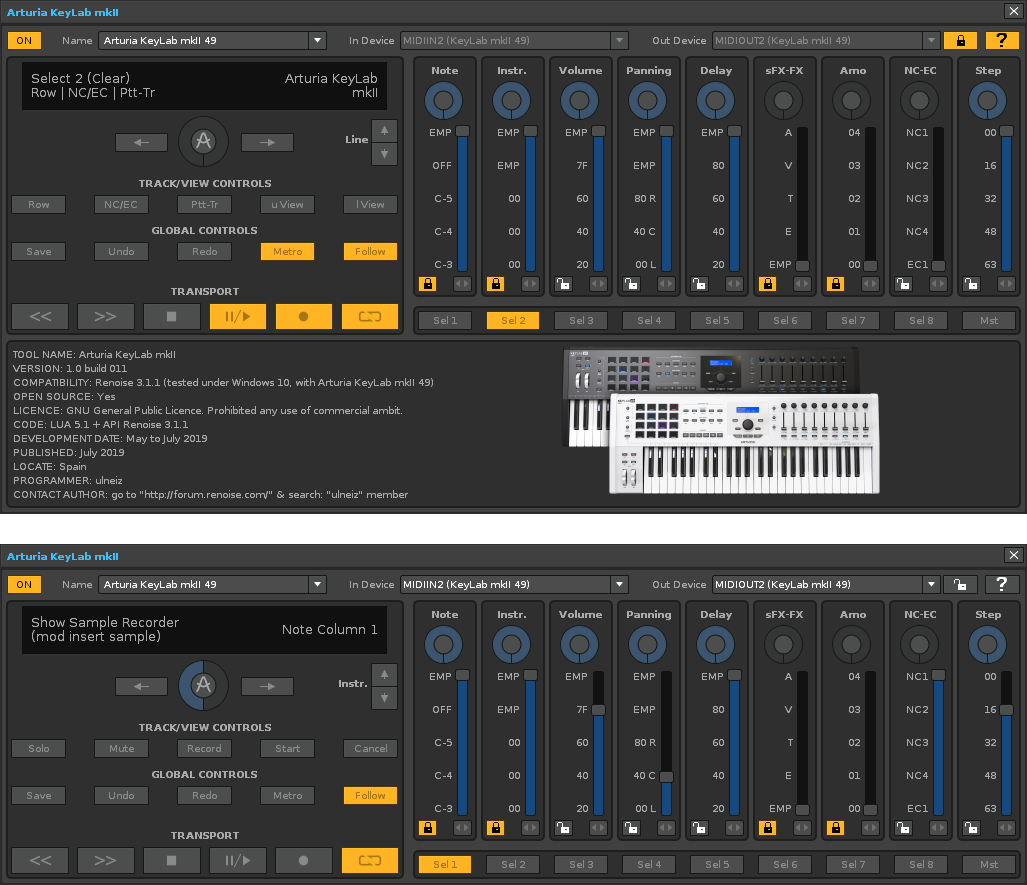The Arturia KeyLab mkII tool is almost finished. This is the final aspect:

If someone has a physical KeyLab mkII of Arturia and wants to use this super-tool with Renoise, let me know and I will upload it to the Renoise web tools server.
The Arturia KeyLab mkII tool is almost finished. This is the final aspect:

If someone has a physical KeyLab mkII of Arturia and wants to use this super-tool with Renoise, let me know and I will upload it to the Renoise web tools server.